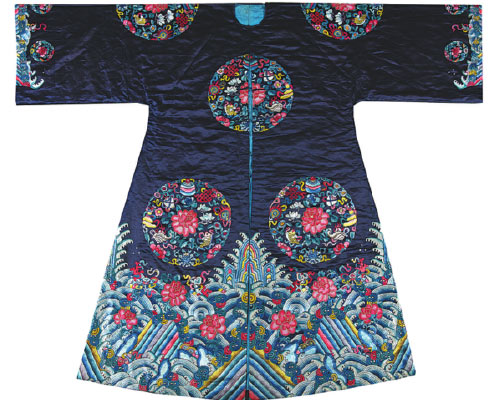 |
|
The patterns of the sea and rugged cliffs are the main features of a Qing Dynasty (1644-1911) gown. [Photo provided to China Daily] |
The parasol, golden fish, conch shell, lotus, vase, dharma wheel, victory banner and "eternal knots" are considered auspicious in Buddhism.
A jifugua (auspicious gown)-with such symbols on it-that belonged to a queen during the Qing Dynasty (1644-1911), is among 10 items of clothing that were on display at a recent exhibition at Tru-Space in Beijing.
"People would wear such a gown for festivals in Qing times, and all the symbols have meaning," says Fang Hongjun, a retired researcher at the embroidery department of the Palace Museum, also known as the Forbidden City, in the capital.
The lotus, for example, is a symbol of purity and enlightenment.
Matching the eight round patterns, the design at the bottom of the gown is called haishuijiangya, referring to the sea and rugged cliffs. Several small patterns, such as the ruyi (a traditional Chinese symbol of good fortune) and peonies, are on this pattern.
"Actually the one who wears the gown is deciding what pattern she wants on the piece-it could be a rhino horn, coral, gourd, silver ingot or some other thing," Fang says.